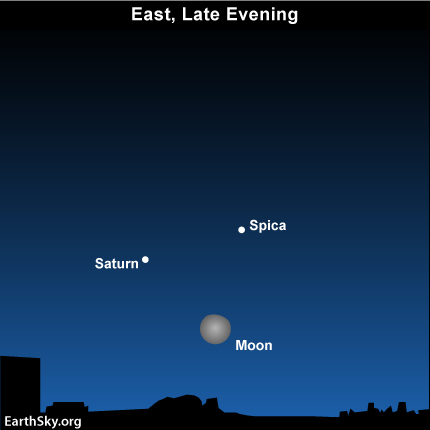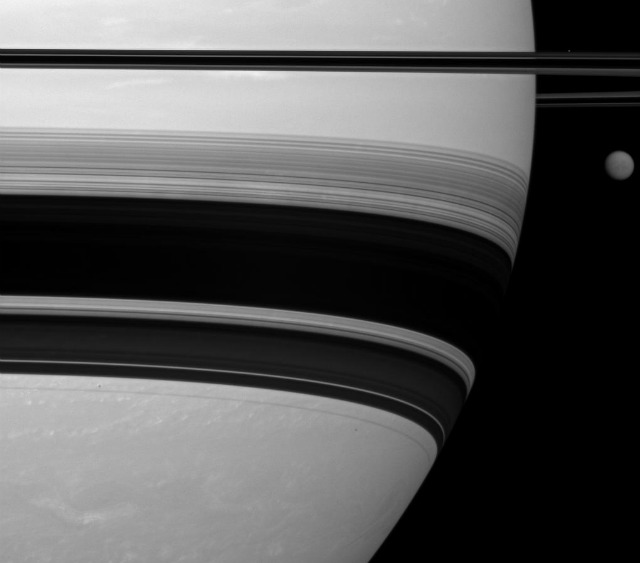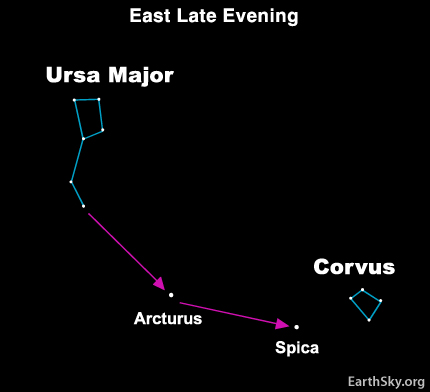Saturn and Spica near moon March 10

Tonight for March 10, 2012
 Courtesy U.S. Naval Observatory
Courtesy U.S. Naval ObservatoryIllustrated guide to Venus and Jupiter conjunction in March 2012
How to see Mars in March 2012
You can distinguish Spica and Saturn by color. Spica sparkles blue-white, while Saturn exhibits a steadier golden light. If you can’t discern color with the unaided eye, try viewing these celestial gems with binoculars.

Here's
a new image from the Cassini mission to Saturn, released March 6, 2012.
Saturn's largest moon, Titan (3,200 miles, or 5,150 kilometers
across), is in the upper right. Saturn's rings appear across the top of
the image, and they cast a series of shadows onto Saturn across the
middle of the image. More about this image via
As you gaze at tonight’s moon near Saturn, you might enjoy thinking about Saturn and its largest moon Titan, as shown in this new image (above) from the joint a joint NASA/ESA/ASI spacecraft mission to Saturn. This Cassini mission has orbiting within the Saturn system since 2004, and what amazing images it has given us!
Now back to thinking about Earth’s moon – very beautiful in its own way, and now only a few days past full moon – still big and bright in our sky. Tonight’s waning gibbous moon – like any waning gibbous moon in late winter or early spring – rises a good while after dark. Watch for it to ascend over your eastern horizon a few to several hours after nightfall, or at about the time that the dazzling planets Jupiter and Venus set in the western sky.

Stargazers
know to follow the arc in the Big Dipper's handle to find the bright
orange star Arcturus - then speed on to Spica. You'll find the Big
Dipper in the northeast in late evening in the month of March.
Spica is a whirling double star
The moon, Spica and Saturn – after rising – climb westward throughout the late evening hours and the wee hours after midnight. The threesome transits – soars highest up in the sky – at roughly 2:30 a.m. local time. Thereafter, the moon, Spica and Saturn descend westward, to move into the southwest sky by dawn. These celestial objects move from east to west across the sky tonight for the same reason that the sun moves westward during the day. The Earth rotates on its axis from west to east, making it appear as if the moon, Spica and Saturn – like the sun – move from east to west across our sky.
Bottom line: On the night of March 10, 2012, see the moon, the star Spica and the planet Saturn rise in the east by middle to late evening, and watch for these orbs to follow their natural procession westward throughout the night. Also, look for Venus and Jupiter – spectacular after sunset! And Mars, now at its best for two year, is ascending in the east each evening in March 2012.

No hay comentarios:
Publicar un comentario